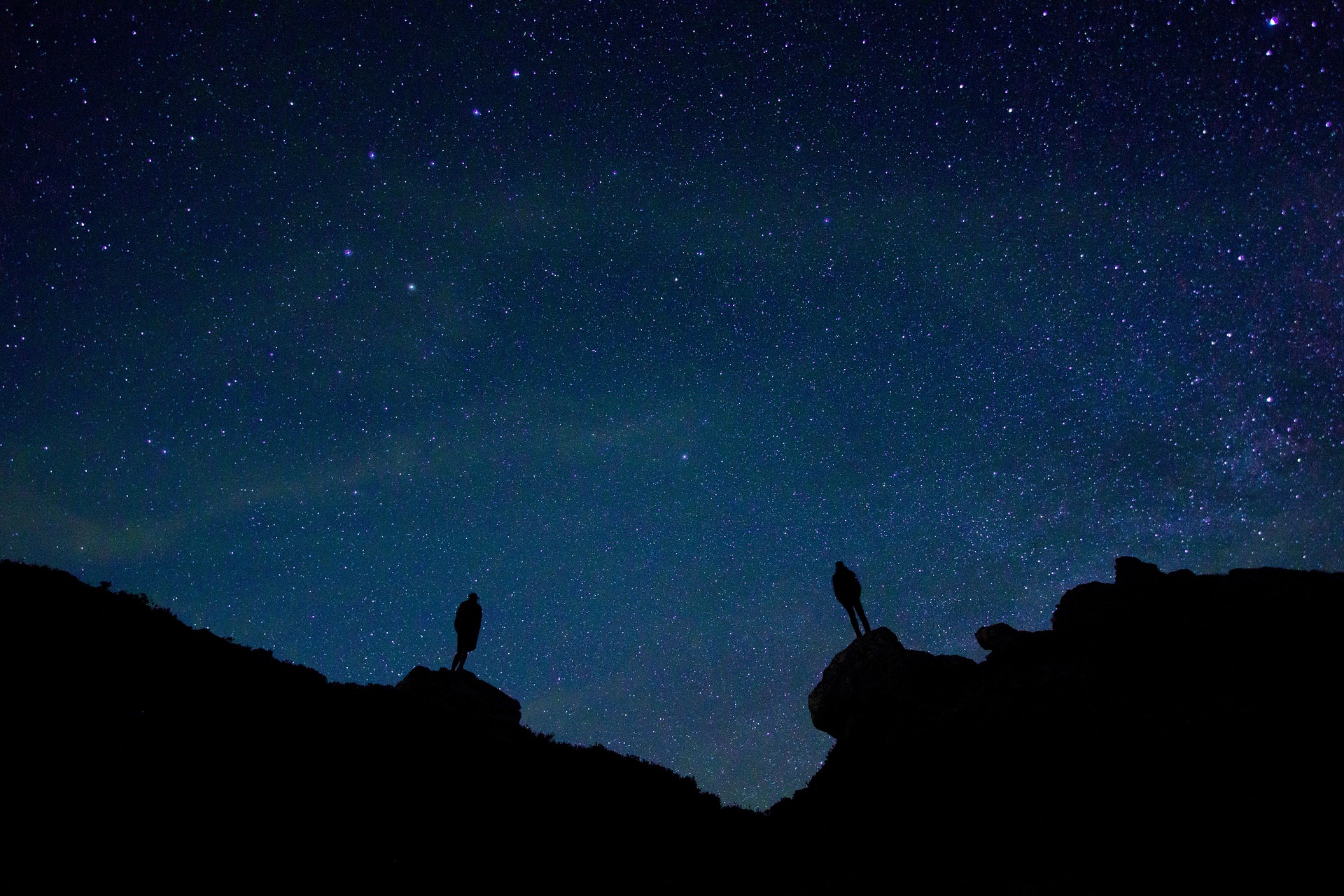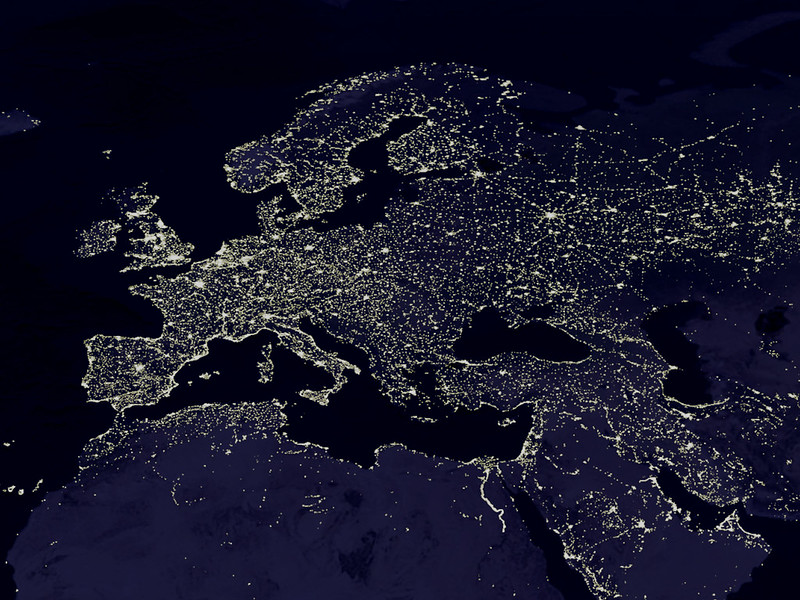Passion of the people – 1.7.5
How to improve sky quality and how to reduce light pollution
Starry skies—a treasure of humanity
The ability to appreciate the cosmos helps us to reflect on who we are. It also helps us to better understand our place in the universe. Spending time in a naturally dark night landscapes is sensational for most of us thanks to the magical interplay of shadows, celestial bodies, and human senses. The night in all its facets is connected to our identity as human beings. If we lose the natural night sky, we lose, in a sense, a part of ourselves and our connection to nature.
Bright nights as today’s normality for many
At the same time, night lighting is an integral part of our lifestyle today. Yet it is ever more important that we handle artificial light responsibly. Sensible use of artificial light promotes health, safety and quality of life. It lowers energy and resource consumption and contributes to the preservation of biodiversity, and the visibility of starry skies.
Questioning the need for lightening
Today, whenever larger sites are renovated or newly built, it is crucial to question and study the necessity of outdoor lighting. Artificial light exhibits various functions, such as protection, orientation, signaling, advertising, or artistic expression. To find out whether a lighting system is genuinely necessary, it helps to examine its functions. Very often, the deliberate decision not to use artificial light is rewarding.
Know WHERE – The location of lighting
The preservation of interconnected dark areas is of particular importance (“dark infrastructure”). The use of artificial light in the open countryside fragments habitats and negatively impacts the nocturnal landscape over long distances. Bodies of water, sensitive transitional biotopes such as riparian areas and wetland habitats are home to numerous endangered species. Trees, shrubs and meadows are habitats for animals and places where birds breed and sleep. In order to minimize the impacts of artificial light on plants and animals and their habitats, vegetation and water bodies should not be illuminated. The transitional zones between town and country should have much lower levels of illumination than the main urban areas.
Know WHEN – Period of lighting
Artificial light should only be available when needed. Through night-time set back or switch off and the use of intelligent control systems, lighting can be provided on the basis of actual, real needs.
Know HOW – targeted lighting, low lighting levels, warm white light colours.
Targeted lighting: Great importance must be attached to the use of fully shielded luminaires for controlled lighting that does not extend beyond the target area. Targeted light control is also dependent on such factors as intelligent optic design (reflectors or lenses) and correct installation (parallel alignment of the light emission surface to the ground). A lower mounting height can be selected to reduce the range of the light emitted.
Low illumination levels: Experience shows that many lighting systems are much too bright. It is important to adjust luminous intensity to match visual and physiological requirements. The human eye can adapt to low levels of illumination. Uniform, glare-free lighting that provides orientation offers increased safety. Which lights to choose?.
Warm white color temperature: In the interest of health, many animal and plant species and astronomy, light in the short-wave range below 490 nm should be avoided. Amber LEDs (below 2200 kelvin) and many warm white LEDs (below 3000 kelvin) satisfy this requirement.
Further resources
Links below will redirect you to external websites. In accordance with the European data protection declarations, we would like to point out that by clicking on these links you may send data to external providers. We cannot prevent that.
Videos
![]() Light Pollution 101 | National Geographic
Light Pollution 101 | National Geographic
![]() The strange scourge of light pollution
The strange scourge of light pollution
![]() What is light pollution, and how could you help reducing it? (Dark Ranger)
What is light pollution, and how could you help reducing it? (Dark Ranger)
![]() What is light pollution and how does it hurt our planet
What is light pollution and how does it hurt our planet
 Light reduction, interview with FFF Kufstein
Light reduction, interview with FFF Kufstein
 Losing the Dark – Verlust unserer Nacht (IDA) (IDA)
Losing the Dark – Verlust unserer Nacht (IDA) (IDA)
 Licht in der Nacht: Die Folgen der Lichtverschmutzung für Mensch und Tier | Doku | DokThema | BR (IDA)
Licht in der Nacht: Die Folgen der Lichtverschmutzung für Mensch und Tier | Doku | DokThema | BR (IDA)
On line resources
![]()
 Good lighting – Where it´s done (Helle Not)
Good lighting – Where it´s done (Helle Not)
![]()
 Good lighting – How it´s done (Helle Not)
Good lighting – How it´s done (Helle Not)
![]()
 Good lighting – Applications (Helle Not)
Good lighting – Applications (Helle Not)
![]()
 Good lighting – Best Practise (Helle Not)
Good lighting – Best Practise (Helle Not)
 Kunstlicht in der Nacht: Positionspapier-Reihe der Tiroler Umweltanwaltschaft
Kunstlicht in der Nacht: Positionspapier-Reihe der Tiroler Umweltanwaltschaft
 Österreichischer Leitfaden Außenbeleuchtung
Österreichischer Leitfaden Außenbeleuchtung
Further readings
Teaching Materials
![]()
 Teaching Material Kit on Light Pollution in 4 Languages (English, Spanish, German, Portuguese) (Stars4all)
Teaching Material Kit on Light Pollution in 4 Languages (English, Spanish, German, Portuguese) (Stars4all)
![]() Teaching material on light pollution in English and Spanish (Streetspectra)
Teaching material on light pollution in English and Spanish (Streetspectra)
![]() Globe at Night (Citizen Science Campaign)
Globe at Night (Citizen Science Campaign)
![]() Word Games and a Light Pollution Quiz
Word Games and a Light Pollution Quiz
For Kids
![]()
 Materials for young scientists: Quiz, Arts and craft corner, App and Exhibition for schools. (Loss of the Night network)
Materials for young scientists: Quiz, Arts and craft corner, App and Exhibition for schools. (Loss of the Night network)
![]() Dark Skies and Energy Education (Globe at Night)
Dark Skies and Energy Education (Globe at Night)
 Unterrichtsmaterialien für Schulen – “Tierprofi Wildtiere” (Die Umweltberatung)
Unterrichtsmaterialien für Schulen – “Tierprofi Wildtiere” (Die Umweltberatung)
 Unterrichtsmaterialien für Schulen – “Lichtverschmutzung” (Die Umweltberatung)
Unterrichtsmaterialien für Schulen – “Lichtverschmutzung” (Die Umweltberatung)
 Wissens- und Methodenbox „Kunstlicht, Nacht und Sternenhimmel“ (Naturfreunde)
Wissens- und Methodenbox „Kunstlicht, Nacht und Sternenhimmel“ (Naturfreunde)


